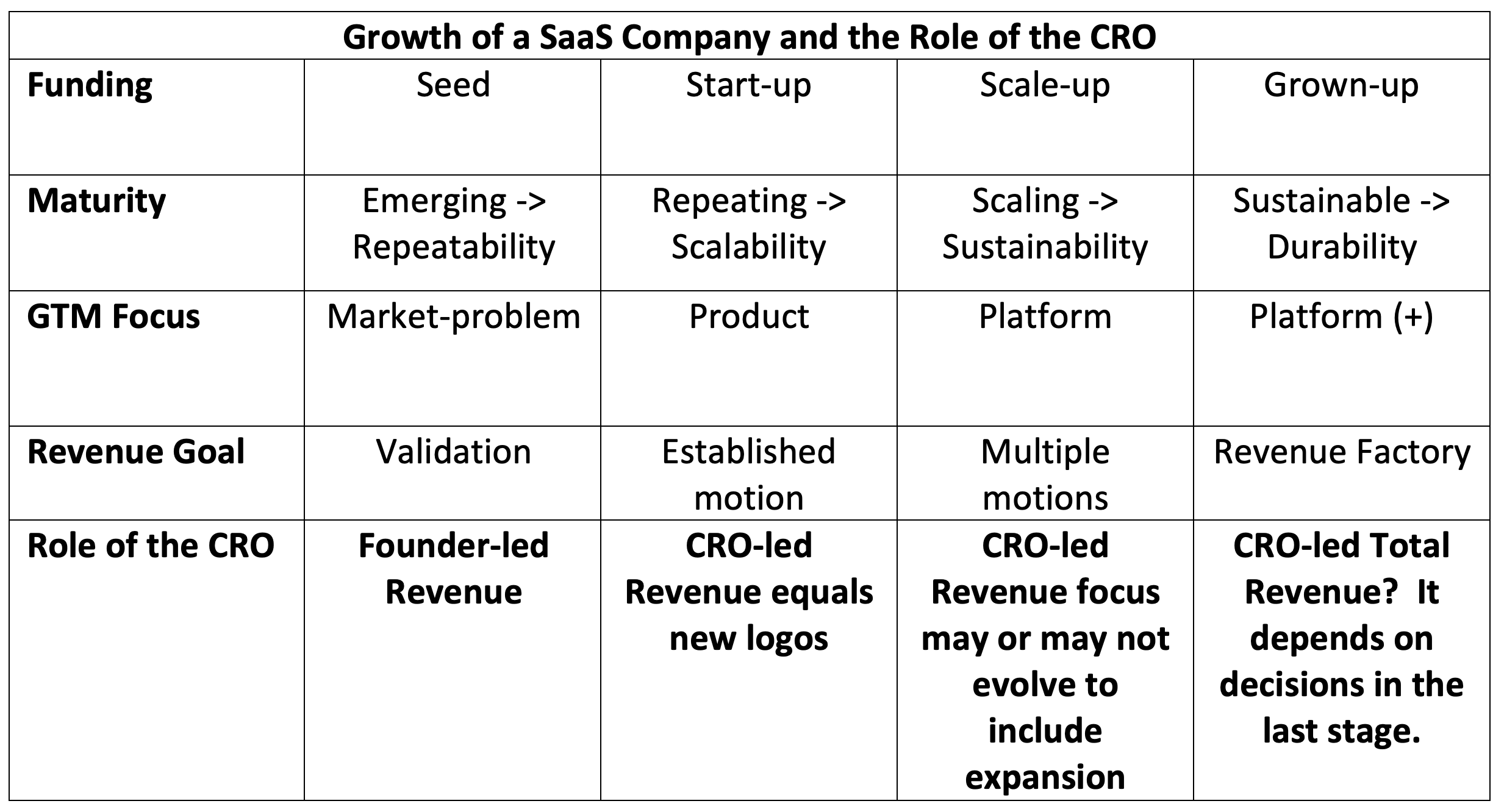What is the role of the CRO, really?
According to ChatGPT (because, why not?):
A Chief Revenue Officer is a C-suite executive responsible for overseeing and aligning the revenue-generating functions of a company, which typically include Sales, Marketing, and Customer Success.
This looks like the chart on the left.
However, many (most) CRO’s are really focused primarily on New Logo Sales. Often, the CRO has a peer called the Chief Marketing Officer who is goaled on metrics related to Reputation and Demand Gen (leads). There is another peer, the Chief Customer Officer or Head of Customer Success who is goaled on Adoption, Renewals, and sometimes Expansion. Finally, there is a Head of Revenue Operations, who builds reports, plugs systems together and manages commissions. All these roles report directly to the CEO, like the chart on the right.
The implications are big. If all the executives report to the CEO, it means the ultimate source of alignment of all the revenue-generating functions is not really the CRO, but rather the CEO. So, in these cases, the CRO absolutely spends his/her energy developing the structures for logo acquisition (i.e. Sales Development Reps, Account Executives, and Channel Partners).
So, which is better? Which is right?
The answer: it depends!
A brief context reminder of how the CRO came to be.
The above table walks through the growth curve of a SaaS Company. Most are familiar with the funding rounds (Seed, Series A… IPO), but it may be more important to think of the CRO’s using the maturity of the business model and the goals at those different steps along the way.
The CRO typically enters the scene specifically to take over the founder-led sales. In the beginning, by necessity, the CRO’s focus must be landing the logos and proving it can be done in a scalable, repeatable way. As the CRO proves to the early investors there is an Ideal Customer Profile with Product-Market Fit (validating their belief in an ROI on their investment), and that the business will indeed scale, the business focus will start to shift to areas like Marketing and Customer Success.
These shifts are inflection points for the CRO. Does the responsibility of CRO start to evolve as the owner of all of Go-to-Market, or does the model stay tied-in to only acquisition sales? So much of the answer depends on the capabilities of the people involved, the complexity of the business itself, and in some cases the politics of the situation too!
But notice, as the company continues to grow (thank you CRO!), it will eventually turn from organic-only growth to acquisition growth to expand and become a platform play. This platform play enables expansion sales (the “hockey stick,” compounded revenue line) promised by SaaS models.
At every acquisition, there is another inflection point. Each time, the CRO’s responsibilities can remain focused on only new revenue, or evolve to include other forms of revenue. The more executives in the mix from acquisitions, the more the CEO needs to push responsibility to known revenue executive to harness and develop further the Revenue Motions towards a Revenue Factory.
Because decisions get made uniquely at each inflection point, the CRO’s responsibilities naturally become varied in the real world.
So what does the CRO do? In terms of revenue responsibility, some will focus exclusively on new logos, others will also take responsibility for expansion, renewals, as well as the underlying operations that support these sales.
But… Rather than focus on specific responsibilities, maybe it is actually more interesting to ask what is the role of the CRO on the executive team? At every single stage (and especially at every single inflection point) the CRO has the most influence on the CEO and has the biggest ability to define Revenue Impact in the next stage of development. The CRO can be the change agent for the development of the model itself. The CRO is generally seen as the orchestrator across the functional teams, ultimately unifying on one objective… overall revenue growth.
That means his/her role is undeniably to be the spokesperson for and the evangelist of the development of a stable, healthy, and growing Total Revenue Factory.


